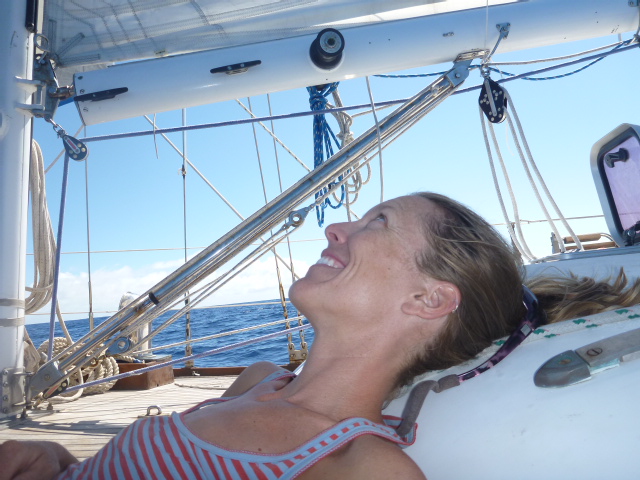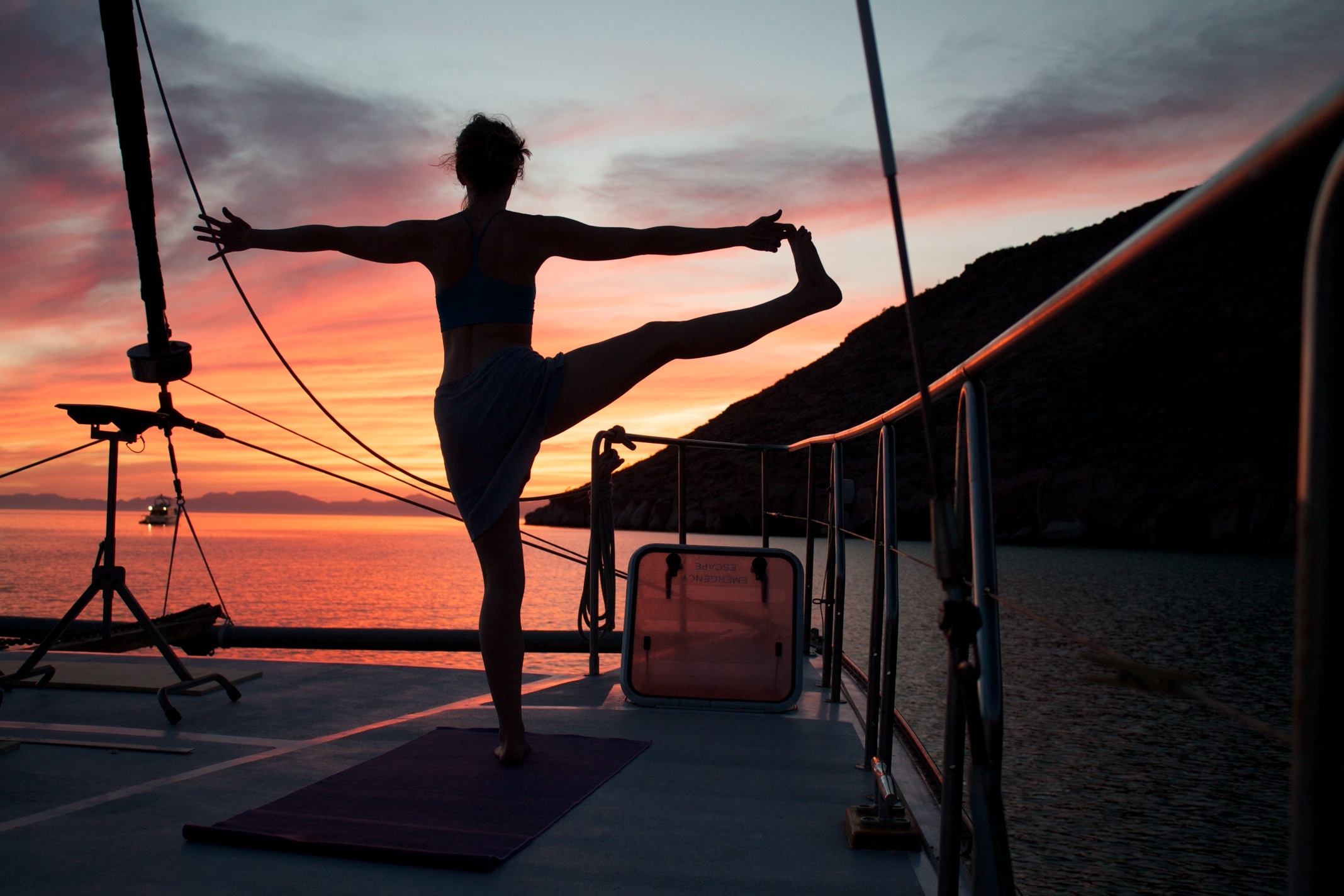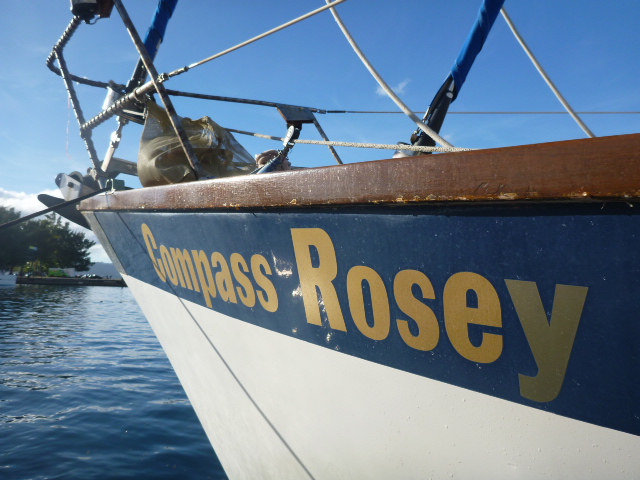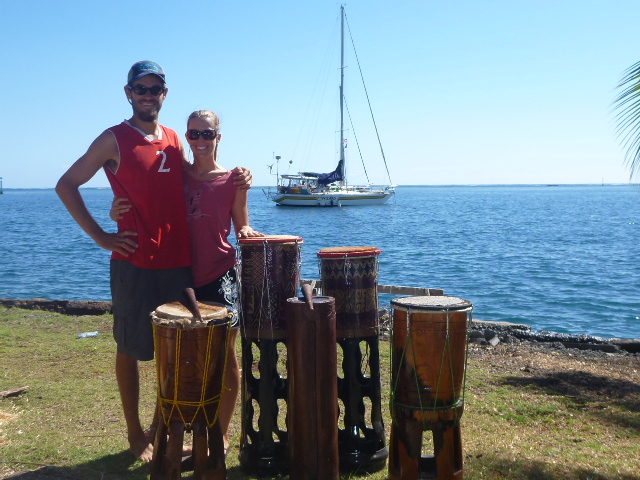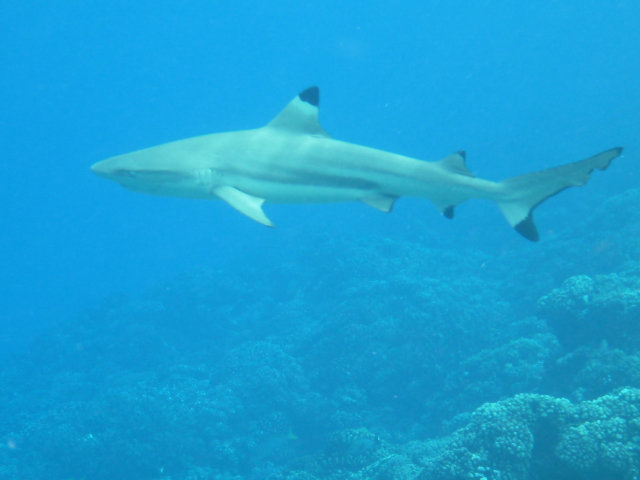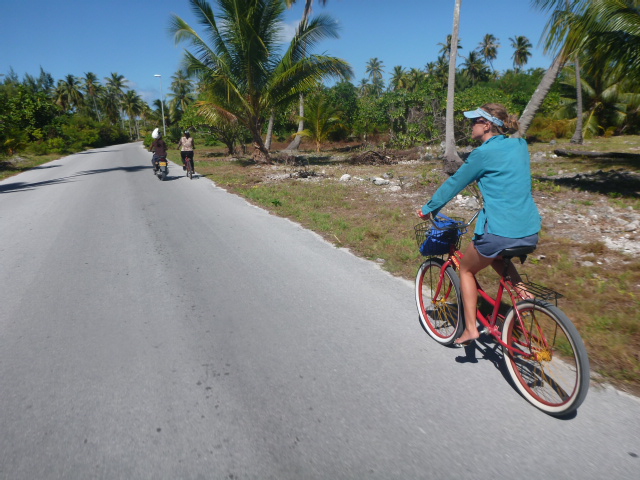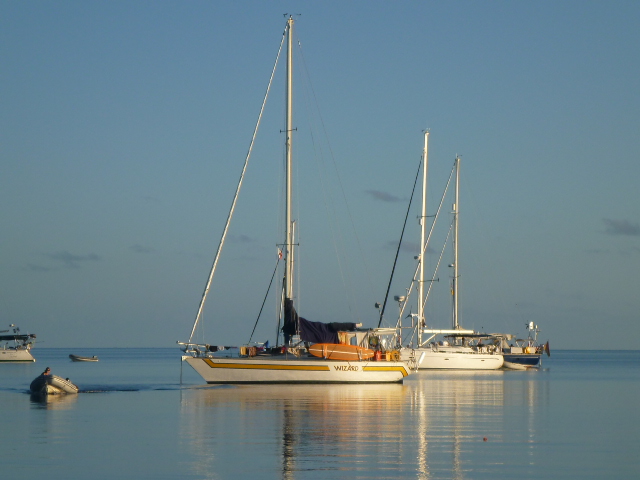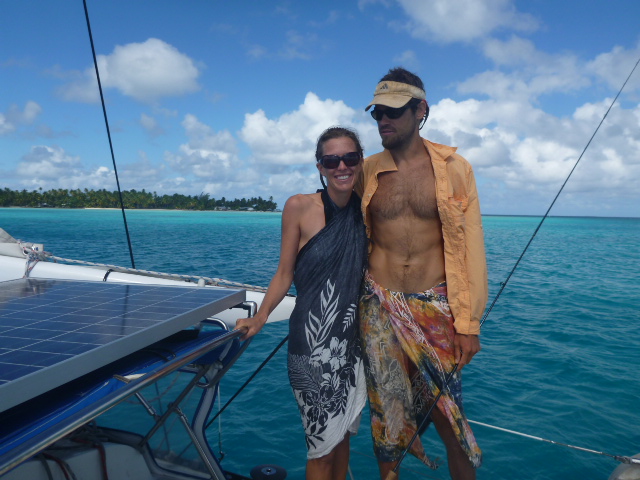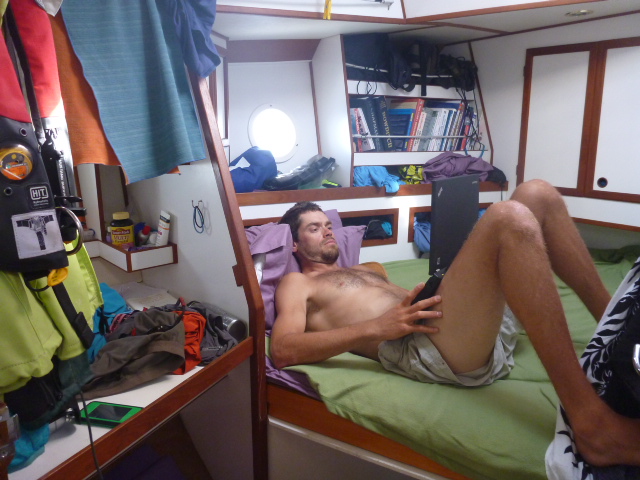A Treatise on Slacker-dom
It’s a luxury to be totally irresponsible. I’m not taking it for granted, either. For someone like me who was a workaholic and a (slight) control freak during my academic and professional careers, it’s totally novel to just sit back and do nothing for a change. Sure, I’ve always been good at taking long, relaxing vacations. But it feels remarkably different to have no end in sight for the long vacation, no one to worry about except me and Rob, no responsibilities, deadlines, bills, or schedule.
I thought I’d be antsy with the free time. I thought I’d be motivated to think up new life goals, to set objectives for next steps. I thought I’d immediately start on the Great American Novel, or organize dance parties and potlucks every night. And I DEFINITELY thought I’d squirm at having to take orders on other people’s boats. Instead, I feel little pull to make big decisions right now, and even the small ones sometimes seem taxing. Surprisingly (at least to me), I’m enjoying following instead of leading. I’m wallowing happily in my newfound slacker-dom.
Of course, there have certainly been moments when I wish I could just take the wheel myself, set the anchor where I want, or organize the cabin my own way. Early on, I had to learn when to bite my tongue and get used to asking permission instead of giving directions. But the transition into ceding responsibility took much less energy than I’d thought. Granted, we participate in decisions to a point, and chime in if we ever feel our safety is at risk.
But 90% of the time, if the captain says “sheet in the main,” I turn the winch and if he says “go to port,” I turn the wheel. And if we hit a reef or the sail rips, it isn’t my responsibility to fix the problem. Even when the control freak in me rears her head occassionally, she quickly bumps into the slacker wallowing on the surface and settles back down.
My slacker-dom was fully revealed to me in Huahine, when I balked at leading yoga sessions for cruisers. That’s how far I’d come in shirking all responsibility: I was reluctant to even take charge of a half-dozen sailors who wanted to stretch for an hour. Jeez. I’ll tell you more about those yoga sessions in the next post, but for now I’ll just say that my normal personality emerged and I happily taught some poses on the beach.
The problem with suddenly being in charge of something, though, was that it woke up my ambitious side. Just a little bit, but enough to make me look around and have a minor epiphany: slacker-dom decreases freedom. Counter-intuitive, right? All of you reading this who are inundated with deadlines, bills and schedules are scoffing at me, thinking that I’m the one with all the freedom. And that’s certainly true, to an extent. But the less responsibility we take, the less chance we have to influence our future. The less we lead where we want to go, the more powerless we are to determine our destination.
In less oovy-groovy terms: if Rob and I owned our own boat, we could go wherever we wanted, however we wanted. We could let our sails luff or yank in the sheets to go faster. Same with me leading yoga instead of following someone else: I get to pick the poses that feel good in my body, and be creative in shaping the flow and flex of the practice. I’m definitely not ready to be my own capitan yet, nor do I want to set up a yoga-for-cruisers school. But after a four-month hiatus from being responsible, I think my slacker-dom might be subsiding some. We’ll see what emerges from the mellow muddle the South Pacific has made of my more ambitious side.

